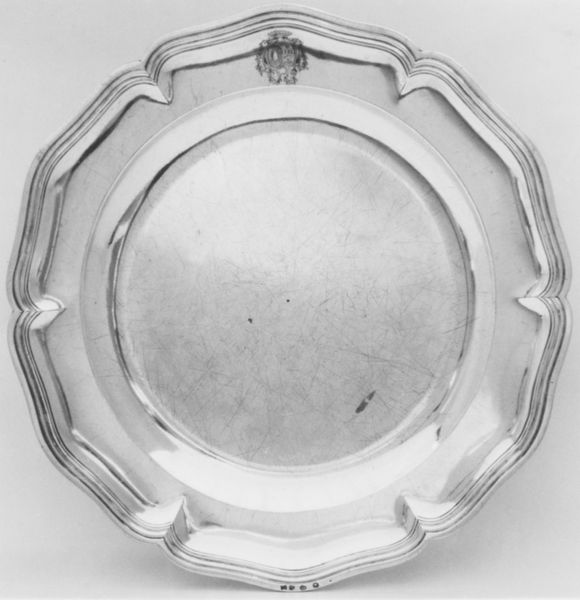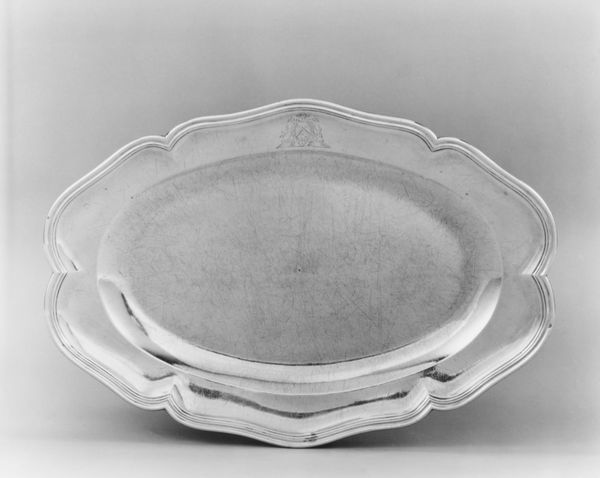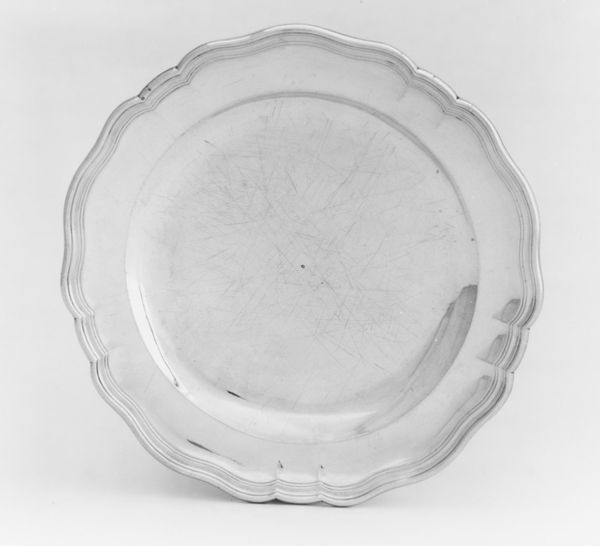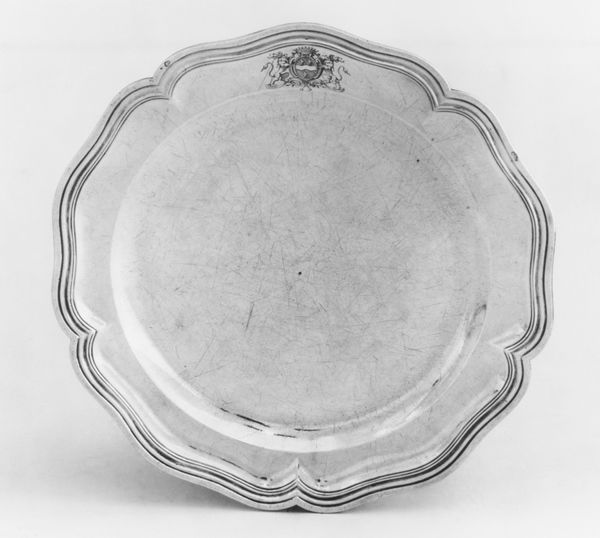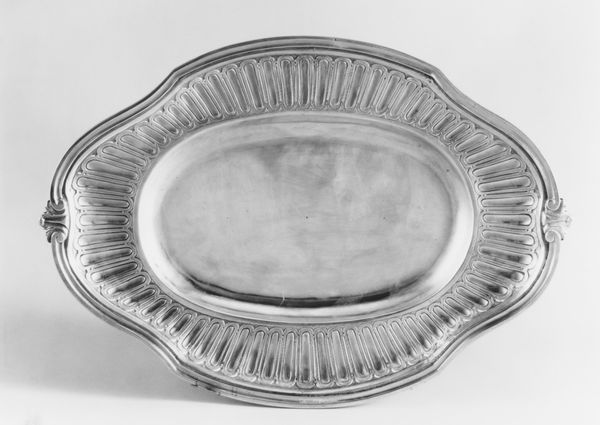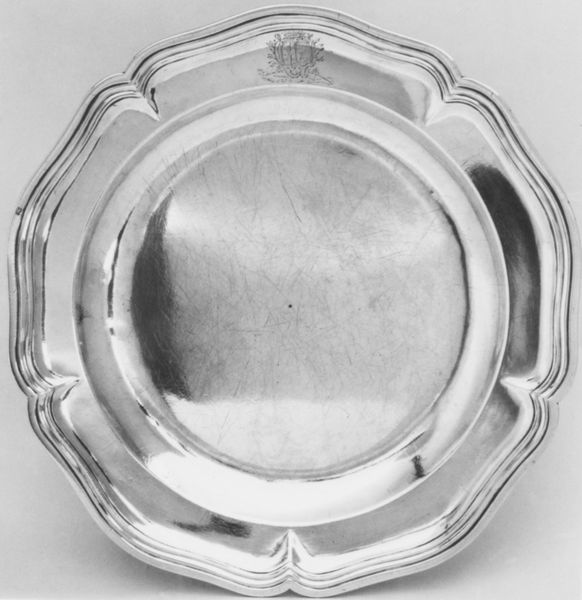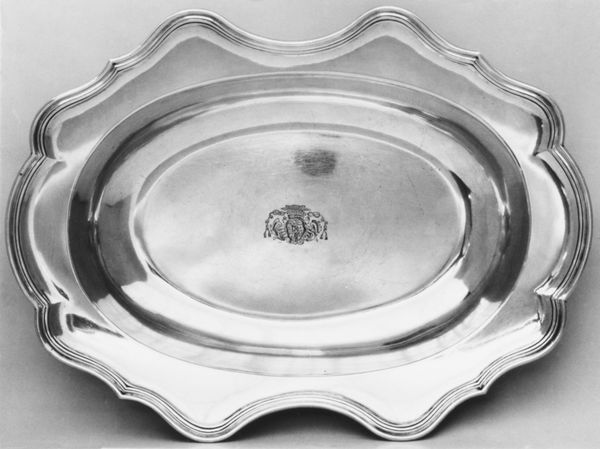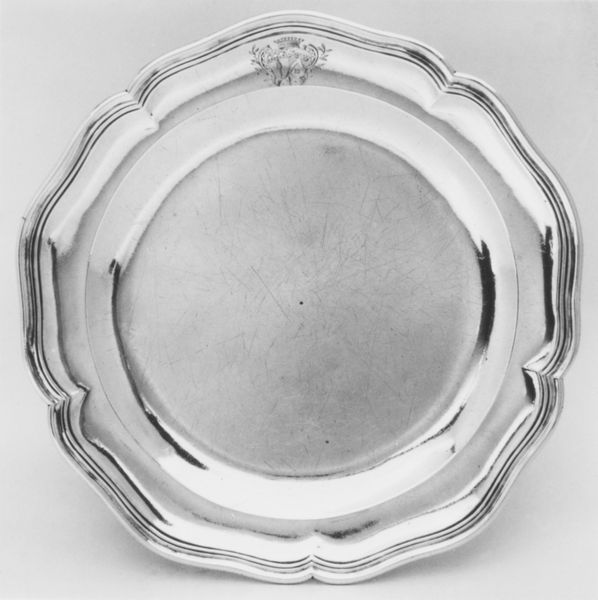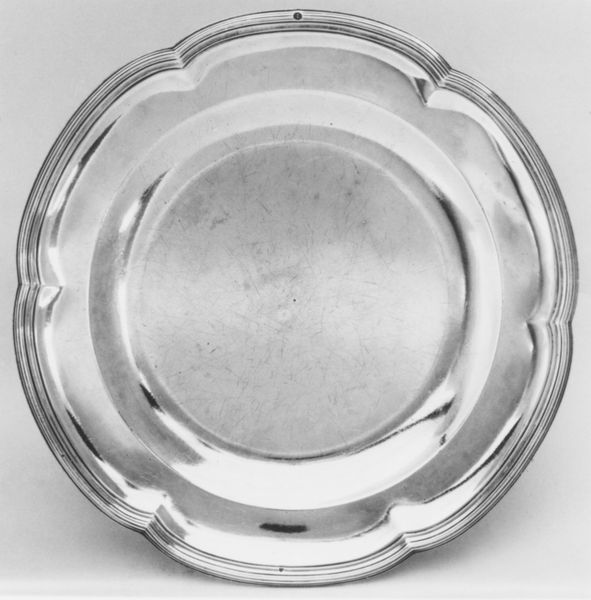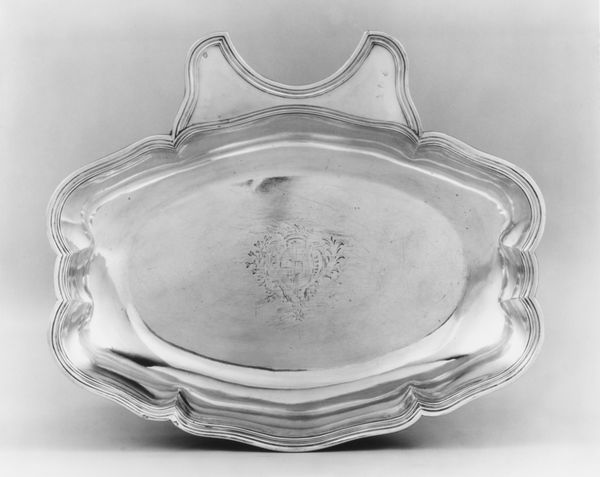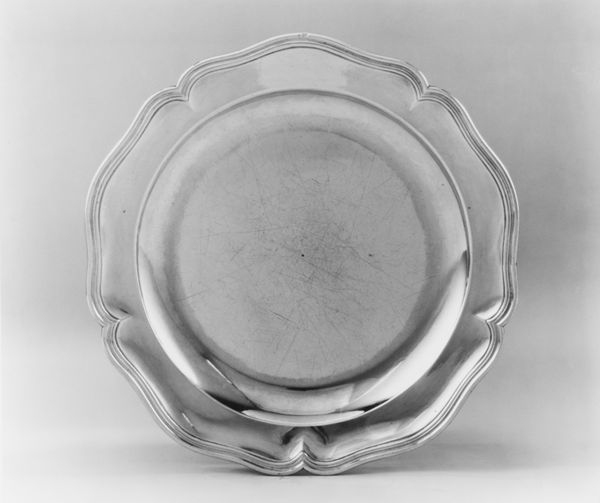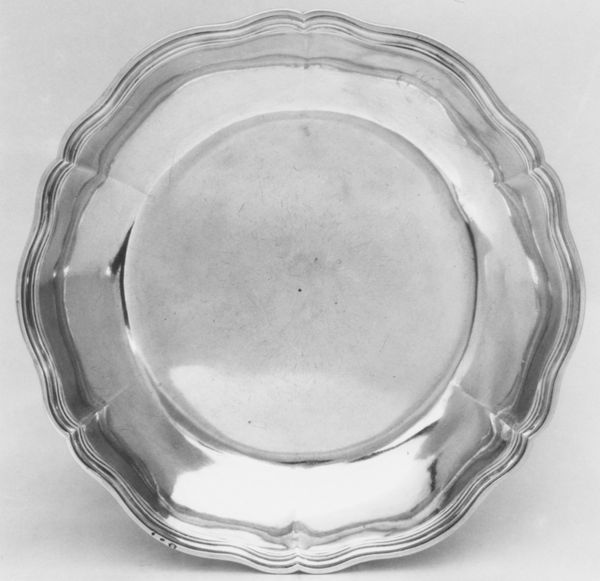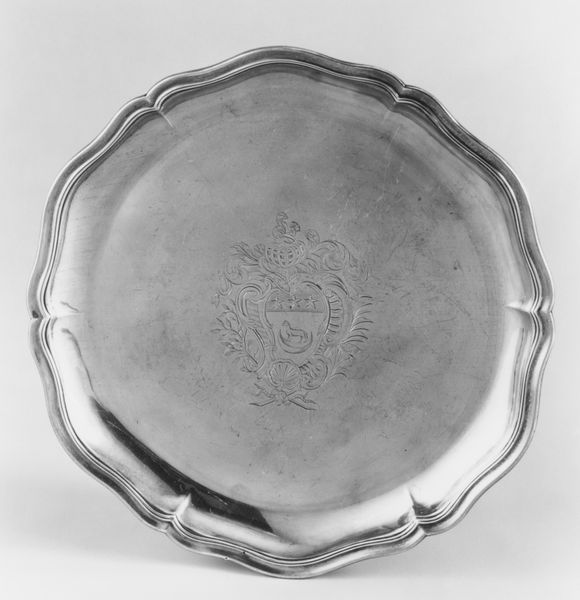
Platter (one of a set, of graduated sizes) 1786 - 1788
0:00
0:00
Dimensions: Overall: 1 × 12 3/4 in. (2.5 × 32.4 cm)
Copyright: Public Domain
Curator: Here we have a silver platter, part of a larger set created by Jacques Bernier between 1786 and 1788. These pieces offer a glimpse into the lavish table settings of the late 18th century. Editor: My immediate impression is one of restrained elegance. The smooth, reflective surface, the gentle curves—it evokes a sense of formality, but without the overwhelming ornamentation you often see. It is almost meditative in its simplicity. Curator: That reflects the burgeoning Neoclassical style. Bernier was working at a time when the French aristocracy were embracing a more sober aesthetic, partly as a reaction against the excesses of the Baroque period and as the winds of social change were beginning to pick up speed. Editor: The crown emblem at the top certainly tells a story of status and power. In its symbolic vocabulary, the platter embodies an ideal of monarchy blessed with serenity and stability, like a calm sea, if I may say so. I think the undulating edges adds to the feeling of waves. Curator: Precisely! These weren’t just utilitarian objects. They were potent signifiers, communicating wealth, taste, and belonging to a very specific social class. Notice, also, how these platters were made in graduated sizes as part of a wider movement of organizing table culture and dining customs during the ancien regime. Editor: Did each size have a designated food, some assigned symbolic role at the table? Curator: Potentially! Contemporary etiquette dictated very specific arrangements and presentation. Each dish and each course served to enhance the meal as both gastronomic and social performance, and I bet there was significance ascribed to the hierarchy and arrangement of sizes here. Editor: Food itself is, of course, incredibly symbolic, so everything would have contributed to the experience. When looking at the symbolism, though, one has to take into account that they speak on several layers—on a class-based level of access to power but also on personal level of experience around the meal and what it stood for, consciously or not. Curator: Right, and understanding the cultural context illuminates the piece far beyond its monetary worth as an object of precious metal. Editor: Absolutely. Analyzing symbols reveals not just the history, but also our shared and subconscious responses to them over time. It almost looks like something delicious should be served on it to be worthy!
Comments
No comments
Be the first to comment and join the conversation on the ultimate creative platform.
